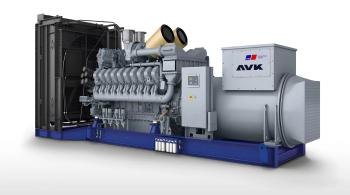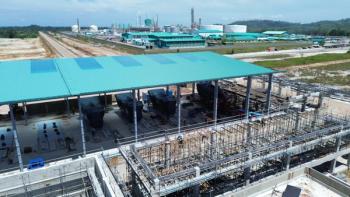
Online and offline cleaning of steam turbines
Fouling of steam turbine blades and vanes is a common problem. A complete and thorough cleaning would require stoppage and opening up the turbine, which may mean shutting down a profitable process. Online cleaning is possible that doesn't require dismantling although the results are not guaranteed.
Below are excerpts from a case study, “Successful Online and Offline Cleaning of Steam Turbines With and Without Disassembly” by Bladimir Gomez Supervisor of PDVSA and Barry Snider of Small Hammer Inc. at the 43rd Turbomachinery Symposium held in Houston in 2013.
Fouling of diaphragm guide vanes[/caption]
At a facility, the steam turbines driving critical compressors were losing power and speed. The governor/steam valve was unable to maintain desired rpm. Unit production reduced and revenue loss was occuring. The cause of the problem was fouling of turbine rotor blades and static guide vanes. The fouling was water soluble chemicals [NaCl, NaOH] bound with insoluble oxides [Fe, Si, Al] > 50 ppb
Fouling typically occurs in stages prior to saturation. Below are some pros and cons of cleaning methods:
Offline mechanical cleaning with aluminum oxide
- Guaranteed results
- Allows for inspection of rotor and other components
- Requires disassembly
- Extended downtime
- Utilizes multiple resources
- Intrusive
Offline slow-roll soak and flush with hot water
- No disassembly
- Short Downtime
- Low Risk
- No modification of facilities
- Results not guaranteed
Online Manipulation of Saturation Point
- No disassembly
- No downtime but some lost production
- Medium risk managing axial thrust
- No modification of facilities
- Results not guaranteed
Online Water Injection into Steam at Turbine Inlet
• No disassembly
• Medium risk managing axial thrust
• No downtime for cleaning but
• Requires modifications of facilities (downtime)
• Results not guaranteed
Slow-roll soak cleaning procedure
- Develop Plan for measuring conductivity (hardness) of water exiting turbine
- Shut down turbine/compressor and place on slow roll using turning gear
- Close all valves except for sentinel valve and leaving free flow open to/from condenser
- Slowly fill turbine to 100% by flooding condenser with hot water/condensate allowing overflow from the sentinel valve
- Allow turbine to slow roll with water flowing for several hours while monitoring conductivity (hardness). When conductivity becomes equal to water flowing in, cleaning is complete.
Fouling occurs in stages prior to saturation[/caption]
Solid deposits of both soluble and insoluble material can be safely and effectively removed from turbine blades and guide vanes. There are removal methods available that do not require disassembly of the turbine. The key mechanism for removing the solids without disassembly of the machinery is to dissolve the soluble material thus releasing the insoluble material. This may be done by:
- Flushing with hot water while slow rolling the turbine or
- Moving the saturation zone back through the fouling zone at normal RPM while monitoring conductivity (hardness).
Newsletter
Power your knowledge with the latest in turbine technology, engineering advances, and energy solutions—subscribe to Turbomachinery International today.





